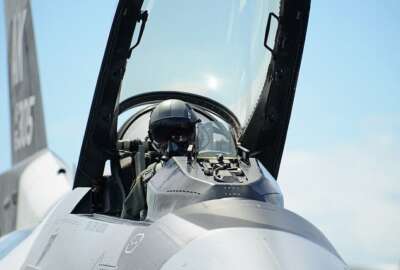
As Air Force tries to grow, it’s still kicking out airmen from previous cuts
The Air Force let go of more than 1,100 airmen in 2015 and 2016 as part of its 2014 force reduction.
The Air Force let go of more than 1,100 airmen in 2015 and 2016 even as the service was regrowing its force.
In a report to Congress, the service details who was forced to the leave the Air Force as part of 2014 reduction cuts that were still being carried out in 2015 and 2016.
“The Air Force conducted no involuntary separation programs in [2015] and [2016], as there were no force reduction requirements. However, some members selected for involuntary separation as a result of 2014 force reduction efforts were not separated until” 2015 or 2016, the March report stated.
A majority of the cuts were taken out on airmen with 10 or more years of service. The average deployment time of the separated airmen was about 15 months.
The Air Force forced out about 350 lower level officers, the rest were mid-level enlisted airmen.
The service cut more than 6,000 airmen involuntarily in 2014 as a means of reducing the force.
The Air Force was on its way to reducing its active duty force to 310,900 in 2014 from 327,000. Since then the Defense Department has asked to beef the service back up to 325,100 in the 2018 the proposal. That would cost about $2.1 billion.
In 2017, the force moved up to 321,000 from 317,000.
Former Air Force Secretary Deborah Lee James was highly critical of the force reductions when they were happening. James said the Air Force was hurting badly from the force reductions, which were partly caused by sequestration budget constraints.
All the military service chiefs have complained about how much money is wasted when Congress mandates force cuts and then asks the services to grow back to their original size.
To recruit the extra 4,000 airmen in 2018, the Air Force is asking for 200 recruiters and training personnel to open the pipeline for 29,000 new enlisted airmen.
At the same time the service must deal with an expected loss of about 57,000 airmen in 2018 from regular attrition.
The Air Force has dealt with some serious retention problems due to budget instability and the nature of military life.
Air Force Assistant Secretary for Budget Maj. Gen. James Martin said the 2018 budget proposal is built to address that issue.
“This budget will allow us to continue our progress in tackling maintenance manpower shortfalls, while also addressing critical capability gaps in critical career fields, such as nuclear, cyber and the [remote piloted aircraft] enterprise. To help with the retention, we will continue to offer incentive pays and bonuses to encourage experienced airmen to stay. We will also continue higher tenure extensions for personnel in key career fields to further retain experience,” Martin said May 23 at the Pentagon.
To make Air Force life more appealing and hopefully retain more airmen in key positions, the budget proposal would fund or increase funding in a series of personnel programs.
That includes hiring more civilian staff to help carry out additional duties and increasing the reenlistment bonus for pilots.
The Army is going through a similar issue of pulling back its drawdown measures. Congress stopped the Army’s drawdown at 475,000 active duty soldiers. It was supposed to go down to 450,000.
Army Vice Chief of Staff Gen. Daniel Allyn said the Army drawdown made the service worried.
“With 186,000 deployed on a daily basis in 140 countries, you understand my discomfort with trying to continue to meet emergent demands and current operations with a force that is getting smaller,” Allyn said during a March 15 Senate Armed Services Readiness Subcommittee hearing.
Copyright © 2025 Federal News Network. All rights reserved. This website is not intended for users located within the European Economic Area.
Scott Maucione is a defense reporter for Federal News Network and reports on human capital, workforce and the Defense Department at-large.
Follow @smaucioneWFED





